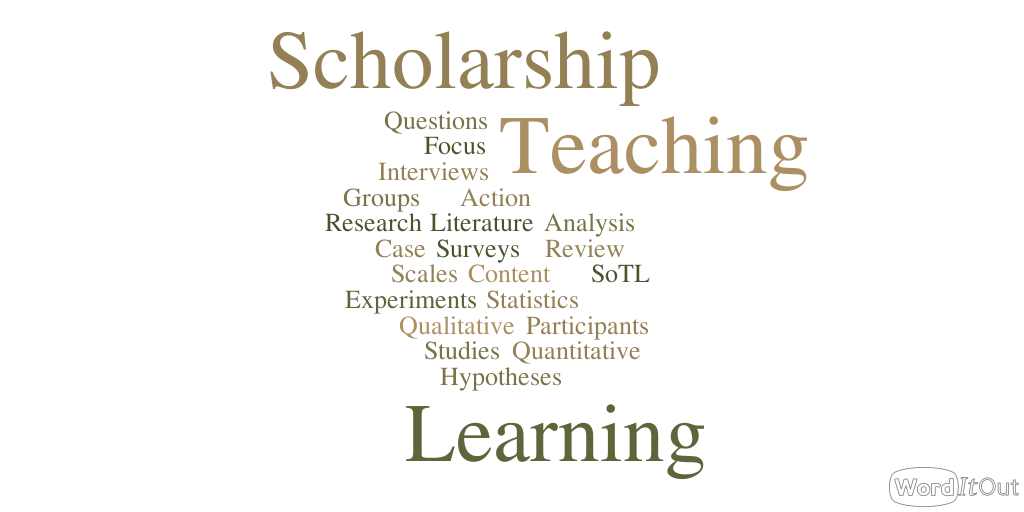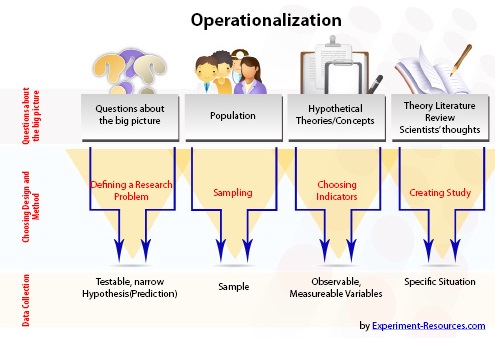

Scholarship of Teaching and Learning (SoTL) is: “problem posing about an issue of teaching or learning, study of the problem through methods appropriate to the disciplinary epistemologies, applications of results to practice, communication of results, self-reflection, and peer review” (Cambridge, 2010, p. 8) *
Quick article from 1999 about the origins of SoTL and rethinking teaching in the academy
So, you are interested in SoTL research or maybe you just have a teaching/learning question you'd like to answer? How do you start? This website is designed for those who have never done SoTL or social science research. So, if it seems too basic, feel free to skip parts!
Step One: Read the literature
Read the literature. It is possible that the problem you are having has been solved or the question answered. Google scholar is your friend as are the reference librarians on your campus. If you read the literature and don't find an answer, proceed to Step Two.
Step Two: Write the literature review
Draft/outline the basic rationale for your study.
Step Three: Create a research question or hypothesis
Create a research question or hypothesis. This should be 1) based on the literataure; 2) contain the specific variables you want to explore; and 3) be testable/measureable.
Once you have a concise research question or hypothesis, you are ready for Step Four.

Step Four: Choose a research method
The three questions below will give you some ideas of the trade-offs of various types of social science research methods. Choosing an answer to each question should help you narrow down appropriate possibilities for methods.
(or two) and gather dataa. What kind of research do you want to do? Explore an issue or problem or Test out an idea/hypothesis?
Exploring an issue/problem. If you wrote a research question because there is not enough information to really nail down alternatives/levels of variables yet then qualitative/open ended methods that do not require you to define all the potential aspects/variables of the issue are likely to be more useful.
Testing an idea/hypothesis - If you are testing a known solution/idea/hypothesis, then you can use qualitative methods or quantitative methods that will allow you to more precisely (numerically) represent the results and compare differences (i.e., between teaching methods; before and after)
b. What is more important: understanding the depth and complexity of a situation or generalizing your results as widely as possible?
Understanding the depth and complexity of the situation? Are you interested in really digging "deep" into this phenomenon to understand all the potential variables that may influencing the outcome?
Generalizing the results as much as possible? Is it more important to be able to generalize the results beyond your sample?
c. Which perspective matters most: participants'/students' indirect perspective or a more direct perspective (grades, observation of behavior)? Here is where you make choices between issues such as measuring student learning outcomes directly or getting a perspective (i.e., students, colleagues) on the teaching/learning situation.
Short Descriptions of Direct and Indirect Methods
Participants (i.e., students) perspective?Sometimes it’s more important to gain the view from participants than to try to gain a more direct view of outcomes.
Outside “objective” perspective? Sometimes a more direct view of learning outcomes or student or teacher behavior is more important than perceptions.
Step Five: Data analysis
Once you determine your method(s) but before you gather data, you should figure out how you intend to analyze the data. Otherwise, you may have excellent data with no way to actually get results!
Step Six: Draw conclusions/recommendations based on the data
The final step in the research (not the writing :) process is to draw explicit conclusions/answers to your hypotheses/research questions based on your analysis.
Step Seven: Write the paper and submit it to a conference/publication!
Resources for writing a social science research paper and potential publication/presentation sites beyond disciplinary teaching journals/conferences
Other sources about doing the Scholarship of Teaching and Learning
*Cambridge, B. (2010). Fostering the scholarship of teaching and learning: Communities of practice. In D. Lieberman & C. Wehlburg, (Eds.). To improve the academy. Bolton, MA: Anker.
Special thanks to FACET members and fellow FACET Retreat workshop presenters: Dr. Julie Saam, IUK; Dr. Irwin Mallin, IPFW; and Dr. Gwendolyn Mettetal, IUSB for their contributions to this website.
Thanks to Dr. Tamul's 2015 Research Methods course at IPFW for their help in finding resources: Brad Affolder, Christie Bowen, JW Kieckheifer, Jordan Littlejohn, Saneta Maiko, Ashley Motia, Niki Reynolds, Israa Samarin, Amanda Seilheimer, Ashley Whitcraft, and Joe Wolter
Clip art from: http://www.clipartsheep.com/; http://www.clipartpanda.com/; worditout.com/word-cloud/